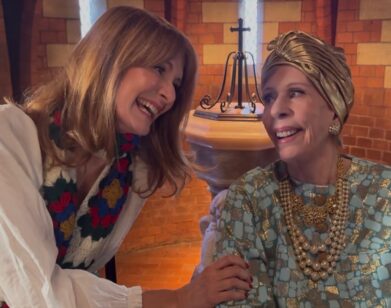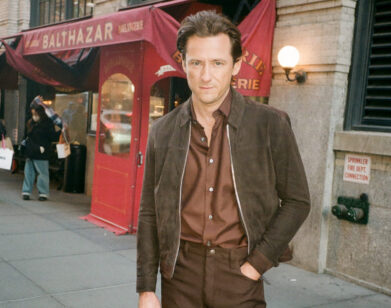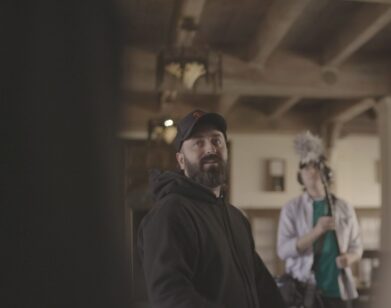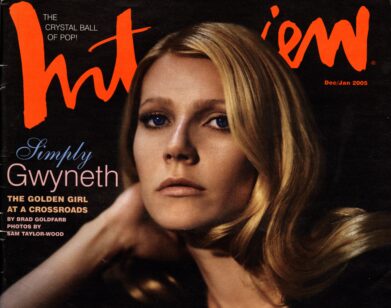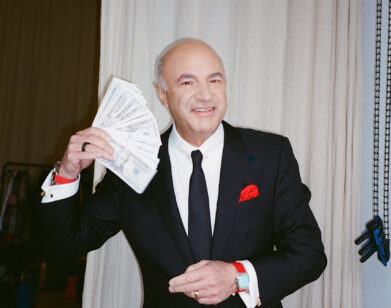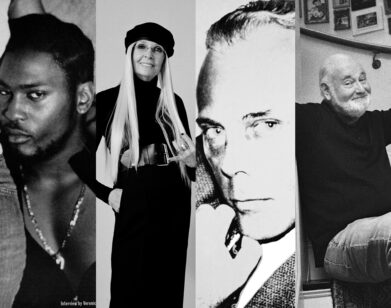Two Weeks in the Life of James Dean
In 1955, a young photographer named Dennis Stock met James Dean at an L.A. party thrown by director Nicholas Ray. Stock was immediately intrigued and wanted to photograph Dean for a story in Life magazine. Dean was a little reluctant (as was Life), but Stock tracked him down to his New York apartment and managed to convince him. Over the next two weeks, Stock captured Dean getting his hair cut at the barbershop, playing the recorder in his apartment, standing in the rain in Times Square, attending dance and acting classes, and hanging out in his hometown of Fairmount, Indiana. They returned to New York in time for the premiere of Dean’s first film East of Eden (though Dean ended up not attending) and never met again. Eight months later, Dean was dead. In the intervening time he had been cast in and filmed Rebel Without a Cause and Giant, and became a movie star.
Life, the new film from Anton Corbijn starring Dane DeHaan as Dean and Robert Pattinson as Stock, is not a biopic. DeHaan is adamant about this. “This movie is about two weeks of his life, so I don’t really feel like it necessarily sums up who he was as a person,” DeHaan explains over the phone. Nor is Life about dispelling the many myths that surround Dean’s 24 years. “I don’t think it would be fair to watch the movie and be like, ‘James Dean was this,'” DeHaan continues. “I think it would be fair to be like, ‘This is probably what James Dean was like for these two weeks.’ It’s such a small slice of his life.”
Now 29, DeHaan began his career in the New York off-Off-Broadway theater scene, followed by television dramas like In Treatment and True Blood. While the Allentown, Pennsylvania-native is usually based in New York, when we talk on the phone he is in L.A. doing pre-production for Luc Besson’s next film Valérian and the City of a Thousand Planets (DeHaan plays Valérian). “We’ve been rehearsing, doing costume fittings,” he says. “I’m getting my hair dyed tomorrow.”
EMMA BROWN: I heard that you were offered the part of James Dean in Life several times and turned it down.
DANE DEHAAN: You have heard correctly.
BROWN: And that one of the reasons you finally decided to sign on was that you had a conversation with one of the producers. What did he tell you?
DEHAAN: That was a part of it. They just kept coming back to me to play the part. James Dean is one of my favorite actors, so it felt like it was too close—too personal—to me. It was kind of sacred territory. The conversation that you’re talking about that I had with the producer Iain Canning explained to me that this isn’t a biopic of James Dean’s life, it’s a examination of how a normal person can be turned into a celebrity or an icon, and I thought that was really interesting. He also said that there are all these young people today who don’t know who James Dean is, and that’s kind of a mind-blowing thought to me. So hopefully people will watch this film and then go watch James Dean’s films.
BROWN: At the end of the film, you see some of the actual images of Dean from the Life article next to frames from the film—what was it like recreating an image so meticulously? Did it feel abnormal?
DEHAAN: It was just a blueprint for what we were creating. It was certainly different in that we have photo evidence that this moment happened, and then what happened before and what happened after was kind of the fun of it. I would always have the book on set with all the pictures in it and I would always bring it out and probably be the most annoying one about making sure that it was exactly like it was. When you watch the movie, you don’t see the actual photos until the end of the movie, so I think it’s an interesting choice that Anton made because you would have to be really familiar with the photos to realize those moments were happening. Again, because it’s such sacred territory for me, I just wanted to honor the truth of it as much as possible. To have photographic evidence of a moment that truthfully happened, [it] was really important to me to recreate that moment as specifically as possible.
BROWN: There’s so much out there about James Dean, and not a lot from Dean himself. Did you feel like you really got to know him?
DEHAAN: Well, I did my best. There’s no way of knowing. That’s one of the main challenges in the movie. You can read anything about James Dean. My job was to sift through the information and figure out what was undeniably true, and of the stuff that was undeniably true, what does that say about who he was as a person. For example, you read biographies and one will say, “He smoked Camel cigarettes,” and the next will say, “He smoked Malboros,” and the next that he smoked something else. You start to realize that somebody probably saw James Dean at a party, saw him smoking and they wanted to tell their friends—they probably knew who he was. All these myths of the kind of cigarettes James Dean smoked were made, when really what to take away from that for me as an actor is he smoked a lot of cigarettes and he didn’t care what kind they were. He wasn’t not going to smoke if he couldn’t find a pack of Camels. I feel like that’s what it is—people wanting to feel like they knew him, and no one really knowing him.
BROWN: In past interviews you’ve said that the most excited you’ve ever been to get a job was when you were cast in an episode of Law & Order: SVU after college. Is that still the case?
DEHAAN: Yeah. In terms of pure ecstasy of the news of finding out that I got the job, for sure. That was a time when I didn’t know if I was going to ever work as an actor. To get that phone call and find out I was going to be on TV as this young kid just out of acting school was the most exciting phone call I could imagine. I was so ecstatic. I’m still so grateful for all the opportunities that I have, but working as an actor has become a part of my life now, and back then it was a dream.
BROWN: Do you miss that feeling?
DEHAAN: Not really. Because along with that comes this unknown. I still love what I do and I still find great joy in what I do, I just don’t have the unabashed optimism. I’ve accomplished almost everything I’ve wanted to accomplish in a way, and that’s such an amazing feeling in and of itself. Back then I hadn’t accomplished anything, and the possibility of it and the opportunity was the most exciting thing that could happen. I respect them as two separate parts of my life, and I don’t really wish it was back then again. I’m happy that it’s now. Life changes and that’s cool too. Growing older is amazing, I think.
BROWN: Is Law & Order how you got your SAG card?
DEHAAN: No, I didn’t have to join until I did a certain amount of jobs. The time that I had to finally pay the dues I did a test of a possible non-smoking commercial. I think I got paid 50 bucks to do it, but because it was my third job, I had to pay however many thousands of dollars to get into SAG. I lost a lot of money doing this possible non-smoking commercial. [laughs] I was just sitting in a lobby coughing.
BROWN: Was it a secondhand smoke situation?
DEHAAN: No, it was firsthand smoke. We were just all dying from smoking.
BROWN: I know you did a lot of theater in New York when you started out. When did you get your Actor’s Equity card?
DEHAAN: It must have been when I understudied this production of American Buffalo, and Haley Joel Osment was in it and I was his understudy.
BROWN: Have you ever had an understudy?
DEHAAN: I don’t think so. I’ve done mostly off-Broadway theater and it’s been shorter runs. The only time you’re required to get an understudy is if the run is a certain length.
BROWN: I think I would feel obliged to take a sick day so the understudy could actually perform.
DEHAAN: This revival of American Buffalo ran for a week, so there wasn’t really time for a sick day. [laughs]
BROWN: Was that quite jarring?
DEHAAN: Yeah, it was. I was devastated. I didn’t expect it and all of a sudden I didn’t have a job, but it was such a blessing in disguise, because when that show was closed I was able to join this production of a play at Soho Rep called Sixty Miles to Silver Lake. I had been already cast in it and I had to drop out of it to take the bigger job. So I was able to get back into that production, and that was really the start of my off-Broadway career, my actual acting career when I wasn’t understudying anyone. Who knows what would have happened if I didn’t have an opportunity to really start my own career.
BROWN: When you were cast in In Treatment, had anybody seen your theater work or was it just based on your audition?
DEHAAN: I think they just saw my audition. I was in the Philippines. I was shooting this John Sayles movie called Amigo and made a tape. The internet was terrible. I sat by my computer for about 14 hours while the video loaded. It was really from that tape. On my way back from the Philippines I stopped in L.A. and was cast. But one of the writers on In Treatment that year was Adam Rapp, and I think he had something to do with getting me the audition in the first place, so the New York theater scene was somehow connected to that for sure.
LIFE IS CURRENTLY PLAYING IN SELECT THEATERS.


